LLNL Computing’s ground-breaking research and development activities, innovative technologies, and world-class staff are often featured in various media outlets.

Source: LLNL News
Lori Diachin named to 2025 ‘legends’ of HPC list
LLNL’s Principal Deputy for Computing Lori Diachin has been named one of HPCwire’s “35 Legends” for 2025, a recognition that celebrates pioneers, visionaries and champions who have left an enduring mark on HPC.
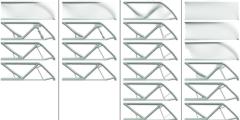
Source: Brown University
Faster topology optimization: an emerging industrial design technique gets a speed boost
Researchers at Brown University, LLNL, and Simula Research Laboratory have developed a new algorithm to help optimizers arrive at solutions in fewer iterations, saving valuable computing time.
Collaborations Computational Math Computational Science Materials and Manufacturing Mathematical Optimization

Source: Science & Technology Review
S&TR cover story: Another innovation celebration
A unique laser optic design and two novel open-source software projects bring the Laboratory’s R&D 100 awards total to 182.
Awards Data Movement and Memory Emerging Architectures HPC Systems and Software Lasers and Optics Near Memory Computing Open-Source Software Storage, File Systems, and I/O

Source: LLNL Computing
ICML25 acceptances
LLNL researchers have posters and workshop papers accepted to the 42nd International Conference on Machine Learning on July 13–19.
AI/ML Computational Math Data Science Events ML Theory Scientific ML UQ and Statistics
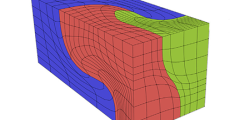
Source: LLNL Computing
Robust evaluation of PDE solutions on high-order meshes
A new mathematical technique improves the computational efficiency of evaluating the solution in large-scale, high-order meshes on advanced HPC systems.
Computational Math Discrete Mathematics HPC Systems and Software Hybrid/Heterogeneous PDE Methods Programming Languages and Models

Source: LLNL News
Cancer drug candidate developed using supercomputing & AI blocks tumor growth without toxic side effect
A new cancer drug candidate developed by LLNL, BridgeBio Oncology Therapeutics, and the Frederick National Laboratory for Cancer Research has demonstrated the ability to block tumor growth without triggering a common and debilitating side effect.
AI/ML Biology/Biomedicine Collaborations Computational Science Data Science Scientific ML

Source: LLNL Computing
Global community convenes for Spack’s first user meeting
Nicknamed SUM25, Spack’s first user meeting showcased new development and a thriving community.
Events HPC Systems and Software Open-Source Software Outreach Software Build and Installation
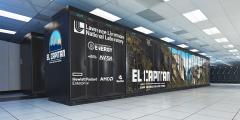
Source: LLNL News
El Capitan reigns supreme across three major supercomputing benchmarks
LLNL's flagship exascale machine maintained its status as the fastest supercomputer on the planet—claiming the No. 1 spot on not just one, but three of the most prestigious HPC rankings.
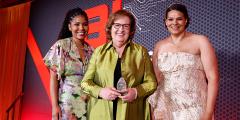
Source: LLNL News
LLNL Deputy Director Pat Falcone receives inaugural AI Honors in Public Science Award
Organizers praised Falcone's “extraordinary leadership in driving research directions to advance science and technology at one of America's most vital research institutions.”

Source: Science & Technology Review
S&TR highlight: AI leadership for national security
As the application of AI across industries accelerates the pace of development, so too must national security remain at the cutting edge, a task requiring extensive collaboration to deploy the nation’s most critical resources.

Source: High Performance Computing Innovation Center
Register for HPC tutorials this summer
Learn how to use a modern, open-source HPC software stack! From mid-July to mid-September, join our tutorials on how to install and use several projects on AWS EC2 instances (provided). All experience levels are welcome.
Education Events HPC Systems and Software Open-Source Software Outreach Scientific Cloud Computing Software Engineering Software Libraries
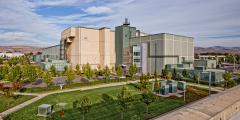
Source: LLNL News
LLNL, Amazon partner on groundbreaking AI integration at the National Ignition Facility
LLNL and Amazon Web Services are partnering to leverage the power of AI to enhance operations at the National Ignition Facility.
AI/ML Computational Science Data Management Data Science Lasers and Optics Natural Language Processing

Source: LLNL News
Stanford professor discusses future of visually intelligent machines and human-AI collaboration
Stanford University professor and AI visionary Fei-Fei Li went beyond technical milestones from her two-decade career into her philosophy of intelligence, ranging from the evolution of vision in the Cambrian Age to modern-day “robot cousins” that can see and assist humans in everyday menial tasks.

Source: LLNL News
Big Ideas Lab podcast enters the quantum realm
In the current episode of the Big Ideas Lab, dive into the strange new frontier where physics meets information, and reality gets rewritten—qubit by qubit.

Source: LLNL News
LLNL researchers use AI to look for potential ALS treatments
A team of researchers from LLNL, Stanford University, and UCLA are using AI and machine learning to find potential treatments for amyotrophic lateral sclerosis and other neurodegenerative diseases in the form of drugs prescribed for other conditions.
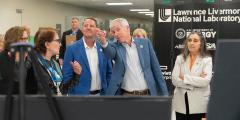
Source: LLNL News
DOE Secretary Wright gets up-close look at innovation in action during LLNL visit
Wright’s day-long visit—his first to LLNL since being appointed Energy secretary—included behind-the-scenes tours of some of LLNL’s most advanced facilities and machines, from the National Ignition Facility to El Capitan, the world’s most powerful supercomputer.
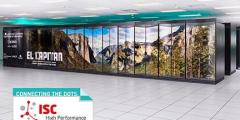
Source: LLNL Computing
ISC25 event calendar
LLNL participates in the ISC High Performance Conference (ISC24) on June 10–13.
AI/ML Data Science Emerging Architectures Events HPC Systems and Software Hybrid/Heterogeneous Natural Language Processing Performance, Portability, and Productivity Programming Languages and Models Resource and Workflow Management Scientific Cloud Computing Scientific ML Software Build and Installation

Source: LLNL News
U.S. Energy Secretary Wright visits LLNL
Wright’s daylong visit included briefings and discussions with LLNL experts in key mission areas including stockpile modernization, fusion energy, AI, cyber security and supercomputing.
AI/ML Cyber Security Data Science Events HPC Systems and Software

Source: LLNL News
Big Ideas Lab podcast examines how AI Is reshaping science at LLNL
On the latest episode of The Big Ideas Lab podcast, listeners will get an inside look at this transformation, as LLNL physicists Brian Spears and Kelli Humbird explain how AI is no longer just about chatbots and automating simple tasks.
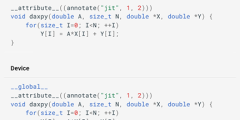
Source: LLNL Computing
Proteus arrives just in time for faster HPC code compilation
A new just-in-time compilation approach leverages LLVM intermediate representation to optimize GPU kernels with portability to any GPU architecture.
Compiler Technology HPC Systems and Software Hybrid/Heterogeneous Open-Source Software Performance, Portability, and Productivity Programming Languages and Models
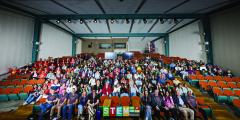
Source: LLNL News
‘STEM Day at the Lab’ enters its 10th year of bringing science to LLNL communities
LLNL STEM Day ignites curiosity and shapes futures, delivering high-quality science, technology, engineering and math (STEM) education to more than 1,935 students—and the impact keeps growing.

Source: LLNL Computing
Distinguished paper offers unique solution for GPU offloading
Research recognized at the HiPC IEEE conference proposes using an optimized version of OpenMP for vendor-agnostic GPU performance, portability, and scalability.
Compiler Technology Data Movement and Memory HPC Architectures HPC Systems and Software Hybrid/Heterogeneous Middleware Performance, Portability, and Productivity Programming Languages and Models Software Engineering
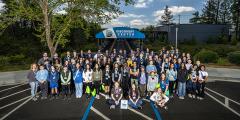
Source: LLNL News
Dream Day inspires Livermore students to explore STEM careers
More than 50 students from five Livermore middle schools visited LLNL on April 18 for Dream Day, an event filled with hands-on science, technology, engineering and mathematics (STEM) activities.
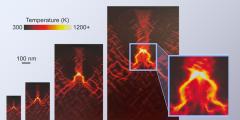
Source: LLNL News
Simulating hot-spot formation in insensitive high explosives
Using the Sierra supercomputer, an LLNL team has made significant progress in understanding how microscopic hot spots form in insensitive high explosives based on TATB.

Source: LLNL Computing
ICLR25 acceptances
LLNL researchers have posters and workshop papers accepted to the 13th International Conference on Learning Representations on April 24–28.
AI/ML Data Science Deep Learning Events ML Theory Natural Language Processing Scientific ML

